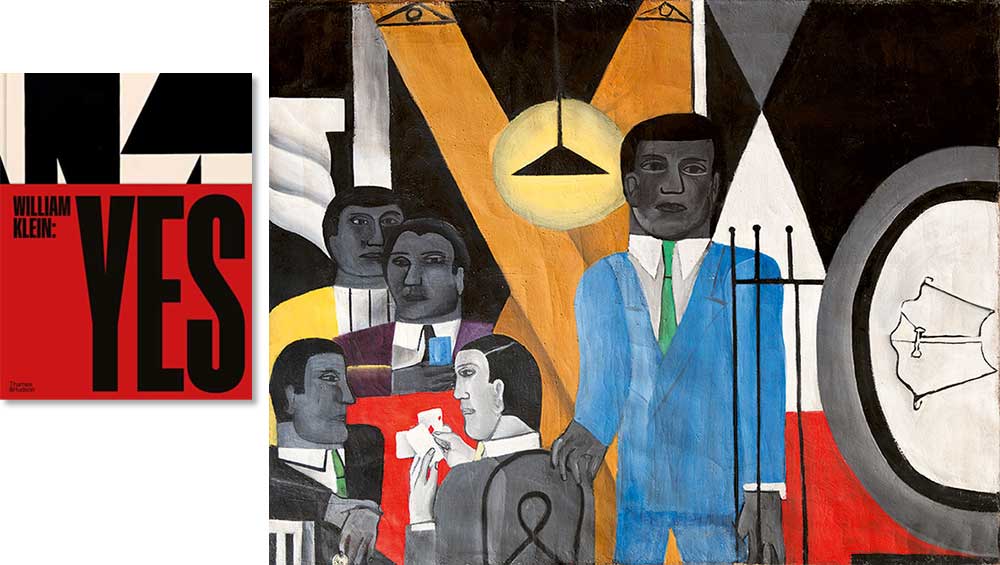
William Klein: Yes, by William Klein and David Campany, published by Thames and Hudson. Image © Thames and Hudson. Right: 4 men in a café, c1948. © William Klein.
reviewed by BETH WILLIAMSON
At just under 400 pages, this new book on the American-born photographer and film-maker William Klein (1926-2022) is a hefty tome. Its bold black-and-white scheme, wrapped up in pillar-box red, gestures to a time when the multicoloured, neon sparkle of the digital era was unavailable, yet photographers such as Klein managed to bring life to the printed photograph despite a lack of the colour that would not feature until later in his career.
The book’s index list of contents immediately indicates the scope of Klein’s work artistically and geographically. From fashion photography to photo essays, painting to film, writing to illustration, exhibition-making to book-making, Klein was versatile and prolific, but he is best known for his photography.
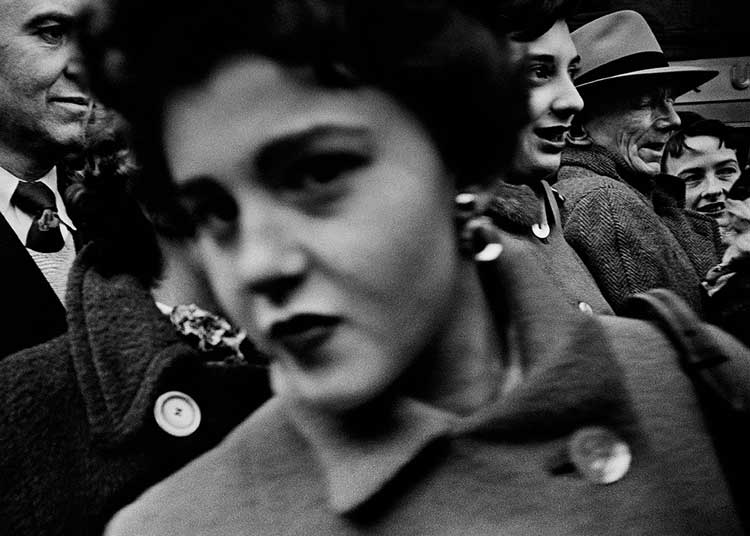
William Klein. Big face, big buttons, St Patrick’s Day, Fifth Avenue, New York, 1955. © William Klein.
The chronological flow of this book acts to reveal the connections between his various modes of working and, importantly, the significance of this way of working beyond specialism for the cultural development of the last 100 years. It also exposes the complex associations between Klein’s politics and aesthetics, a point that the book’s co-author David Campany recognises in Insider/ Outsider, an essay that acts to contextualise Klein’s work in this book. Klein was an insider and an outsider as he worked at the centre of commercial image-making while managing to remain one of its most perceptive critics. He won his first camera in a poker game and, as Campany explains: “Every image since has been a little bit pokerish: street-wise, bluffing, anticipating, but intuitive and spontaneous, too – neither poker or art should be predictable.” (page 22)
When Klein arrived in Paris in 1948, he trained with Fernand Léger and his own painting displayed the bold colours and flattened compressed space of Léger’s style. Klein’s work, at that time, had much in common with the American hard-edged abstraction of his friends Ellsworth Kelly and Jack Youngerman. Still, he was unconvinced by the emphasis on separation of media that came to dominate that way of painting. Instead, he was enthused by the assortment of media, and the play between them, that had been pioneered at the Bauhaus, picking up early on possibilities offered in György Kepes’ book Language of Vision (1944) and László Moholy-Nagy’s Vision in Motion (1947). It was this way of making that set the scene for his future work.
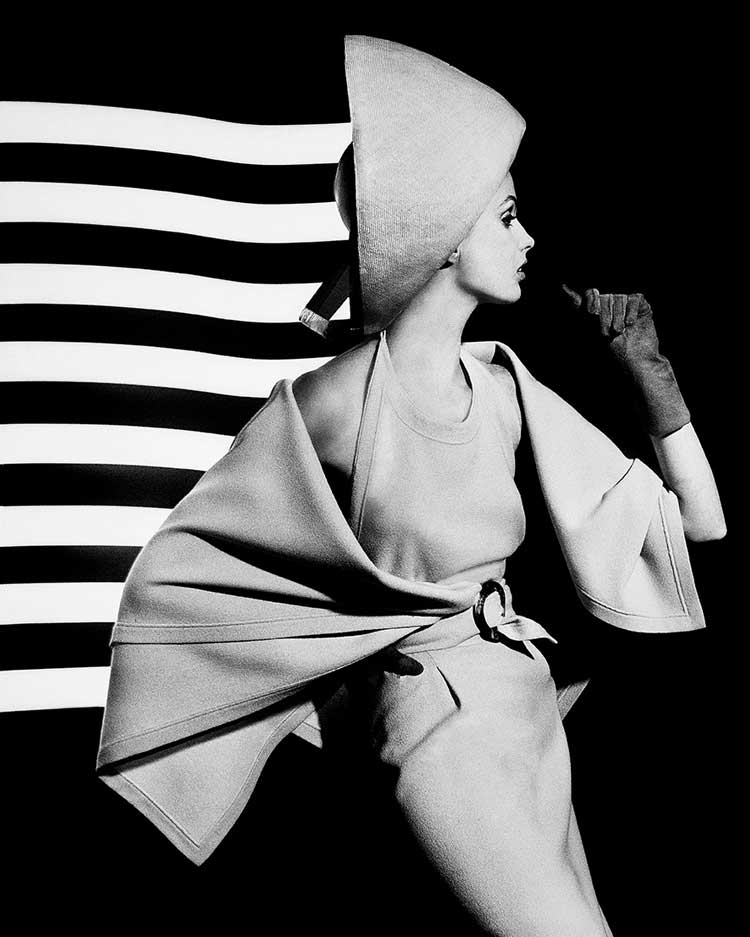
William Klein. Dorothy McGowan + White Light Stripes, for Vogue, 1962. © William Klein.
In 1954, after spending some time on abstract photography, Klein began working for Vogue. He seemed undaunted by the shift from abstraction to figuration in his photographic practice and he continued to innovate and experiment. He photographed the streets of New York. Later, these were published in book form, Life is Good and Good for You in New York (1956). Images were printed up to the edge of the page with no white border to contain them. The hundreds of images reproduced in the present book are printed in the same manner. The edge-to-edge printing acts as a device that transforms the photographs into environments, drawing the reader into the scene and the city.
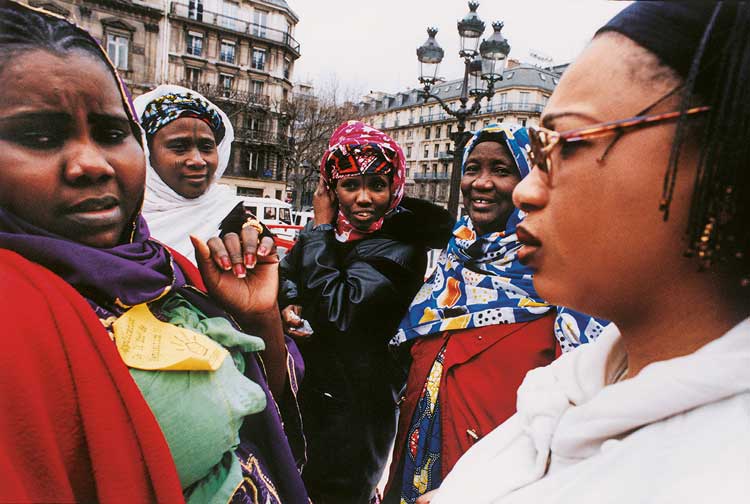
William Klein. Right to Housing’s association members, Paris, 2000. © William Klein.
This is especially evident in his photographs of New York, Rome, Moscow, Tokyo, Paris and Brooklyn, where the reader becomes part of the scene. Whether it is passengers in a crowded tram in Room in 1956, pedestrians on a busy Tokyo street in 1961, or children playing in the snow in Moscow (1959-61) or in the streets of New York (1954-55), the sense is that we, as readers, are in the picture and that is thrilling to experience. As Martin Parr has commented on Klein’s New York spread, it is the accumulation of images that has this effect: “By the end of it you haven’t just seen a collection of individual pictures, you’ve seen an accumulation which creates this noise, which gives off energy which reflects so accurately what was going on in New York in the 1950s.” (page 28)
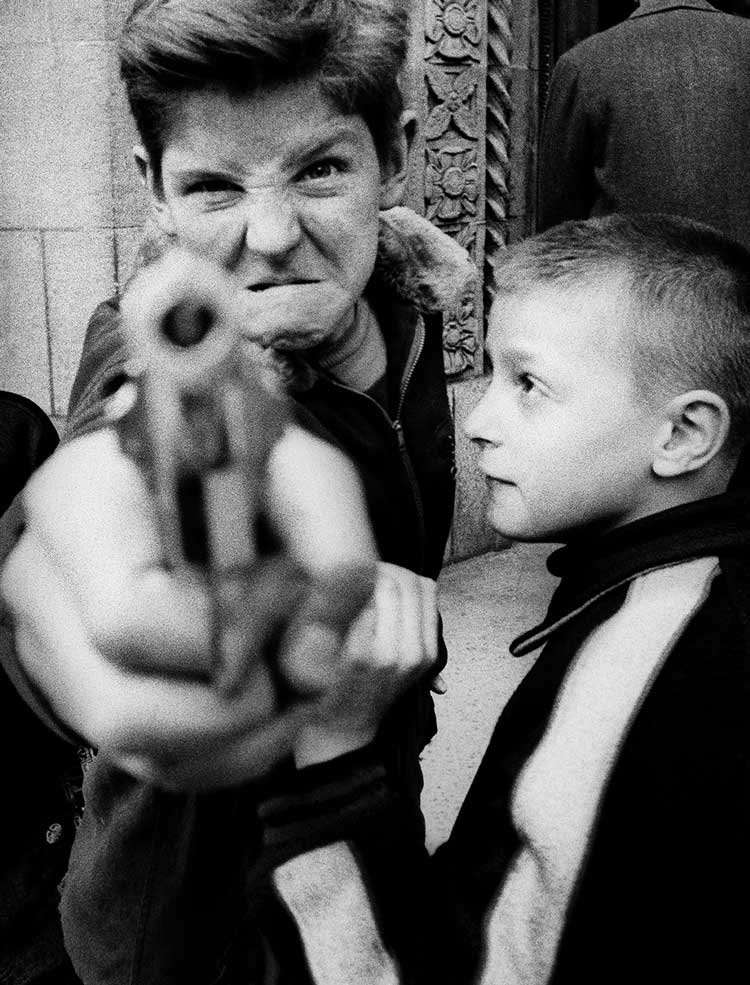
William Klein. Gun 1, 103rd Street, New York, 1954. © William Klein.
Klein’s approach to fashion photography was to shake it up. Continually pushing the boundaries of the acceptable in his work for Vogue, he blew up faces to emphasise the grain, used long exposures and moved lights around to make abstract shapes, shot models in unusual outdoor settings and encouraged them to drag longingly on lit cigarettes. In a section of the present book devoted to his fashion photography, examples of these approaches abound. Rather than the stuffy politeness of haut couture, the reader is treated to the wit, intelligence and sheer mischievousness of Klein’s images.
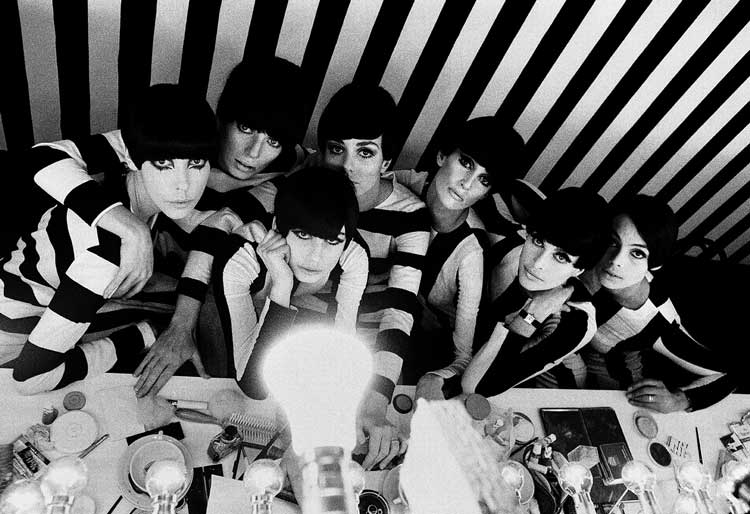
William Klein. Op-art dressing room and models, ‘Who Are You, Polly Maggoo?’, 1966. © William Klein.
Meanwhile, Klein’s reputation in film and street photography continued to build and attract attention. The Italian film-maker Federico Fellini praised Klein’s Rome book in 1959. Film director Stanley Kubrick lauded his film Who Are You, Polly Maggoo? (1966). The following year, Klein’s Mister Freedom was shot, tackling questions of masculinity and toxic self-deception, although it would be 1969 before it was finally released. A string of further films such as Eldridge Cleaver, Black Panther (1970), The Model Couple (1977) and The Little Richard Story (1980) were to follow. Campany bills the latter as a meta-film since it examines the machinery of popular culture and the power of the image, both critical considerations for Klein throughout his long career. It is not coincidental that the powerful graphics of the present book tend to expose these tropes, too, through their individual boldness and collective accrual, as well as the prime place given to Klein’s own images, which fill almost the entire book in full page format.
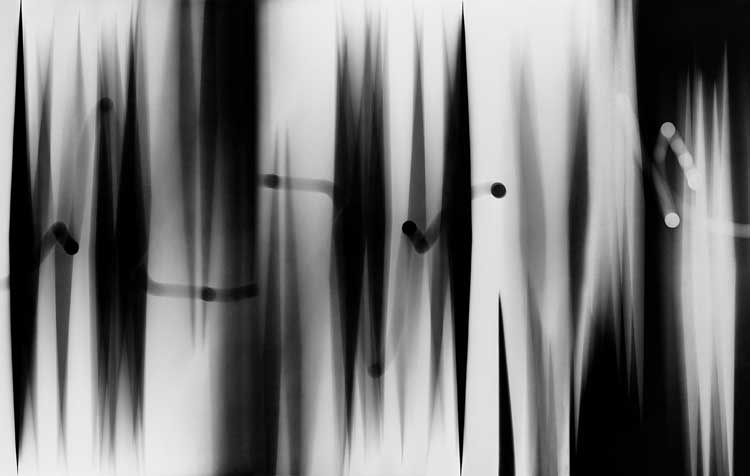
William Klein. Moving Diamonds c1952. © William Klein.
Klein never faltered in his efforts to take film and photography of all sorts forward. In his own words: “A picture is taken at 125th of a second. What do you know of a photographer’s work?” (page 38). Each high-quality image in this book goes a long way towards enabling us to know Klein’s better. Together, they bring it him alive.
• William Klein: Yes, by William Klein and David Campany, is published in the UK by Thames and Hudson, price £65. (It is published in the US, price $95).